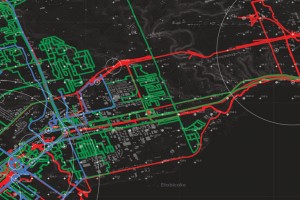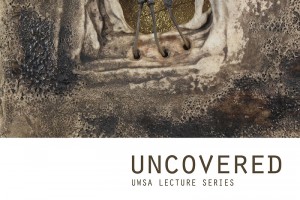Come down to the main lecture hall TODAY, Thursday January 30, at 6:45 pm, where writer Jane Farrow and Professor Paul Hess will be giving a lecture entitled “It’s Not All Café Latté: Walking Toronto’s Inner Suburbs”.
Jane Farrow
Journalist; Founding Director of Jane’s Walk, an NGO based in Toronto engaged in walkability initiatives that celebrate the ideas of urbanist Jane Jacobs.
Experience:
CBC Radio One host and producer of programs including Workology, Home, The Omnivore, And Sometimes Y
Author of Wanted Words; co-author of Canadian Book of Lists (2005)
Lecturer at various conferences and colleges including University of Toronto, George Brown, Ryerson University, York University and UTS School
2006-08 Chair of the resident’s group Active 18 which advocates for good design and sustainable development in the Queen West Triangle neighbourhood of downtown Toronto
2011-12 Executive Assistant to Ward 32 Councillor Mary-Margaret McMahon (Beaches – East York)
Jane Farrow specializes in bringing people together for constructive dialogue and creative city-building initiatives. Farrow was the founding Executive Director of Jane’s Walk, guiding this event in 2007 to a global success story that is now ofered in 75 cities in 15 countries around the world. Jane’s Walk is dedicated to creating walkable cities, connecting communities and raising urban literacy building on the legacy and ideas of urbanist and author Jane Jacobs.The main activity of Jane’s Walk is the annual walking tour extravaganza where volunteers tell the stories of how cities and neighbourhoods work, who plans and builds them, who lives there and in the process, inspires people to come together to make them better.
During her tenure as the Jane’s Walk Executive Director, Farrow co-authored several walkability studies with Professor Paul Hess of the University of Toronto Department of Geography and Planning. Walkability in Toronto’s High-Rise Neighbourhoods, is the first comprehensive look at walkability in the suburban high-rise settings of North America. This research explores some densely populated but geographical- ly isolated neighbourhoods and point to simple and inexpensive solutions for improving connectivity and accessibility. Alongside this research, the authors developed an acclaimed research model and resource toolkit that can be used by communities and individual to assess their own neighbourhoods.
Farrow has long been involved in community building both as a volunteer and freelancer. Over the years she has worked at Toronto’s Inside/Out gay and lesbian film festival, the National Association of Women and the Law, and taken part in community radio and conference organizing in Toronto, Halifax and Vancouver. In 2010 Farrow was awarded a Vital People grant by the Toronto Community Foundation in recognition of her work as a valued community leader and city builder.
Paul Hess
Associate Professor, Department of Geography and Program in Planning, University of Toronto; Associate Chair and Director, Graduate Programs in Planning, University of Toronto
Paul Hess is the Director of the University of Toronto’s Program in Planning. His teaching and research focuses on urban design, pedestrian environments, streets as public space, and local mobility as a social justice issue. Current research projects include examining how new Canadian immigrants adapt to an automobile-dependent society, and understanding the role of neighbourhood design in promoting physically active and healthy children and youth. His work is published in the Journal of Planning Education and Research, the Journal of the American Planning Association, the Journal of Urban Design, and the Transportation Research Record.
In collaboration with Jane Farrow (Jane’s Walk) he produced the report, Walkability in Toronto’s High-rise Neighbourhoods. Walkability is defined as a quantitative and qualitative measurement of how inviting or uninviting an area is to pedestrians. Walking matters more and more to towns and cities and the connection between walking and the social vibrancy of neighbourhoods is becoming clear. Built environments that promote and facilitate walking — to stores, work, school and amenities are better places to live, have higher real estate values, promote healthier lifestyles, have lower greenhouse gas emission rates and show higher levels of social cohesion. The Walkability Study examines eight Toronto high-rise neighbourhoods.
Cover image from: http://faculty.geog.utoronto.ca/Hess/walkability/Walkability%20Full%20Report%20-%202001Nov17Low_Res.pdf
Nicole Ratajczak, currently the Editorial and Graphics Director for BRIDGE, has been a contributor since January 2013. She is in her second year of undergraduate studies at the University of Waterloo School of Architecture.




![[SWAG] Meeting Minutes July 2013](http://waterlooarchitecture.com/bridge/wp-content/uploads/2013/06/swag_logo-e1410273844246-300x200.jpg)